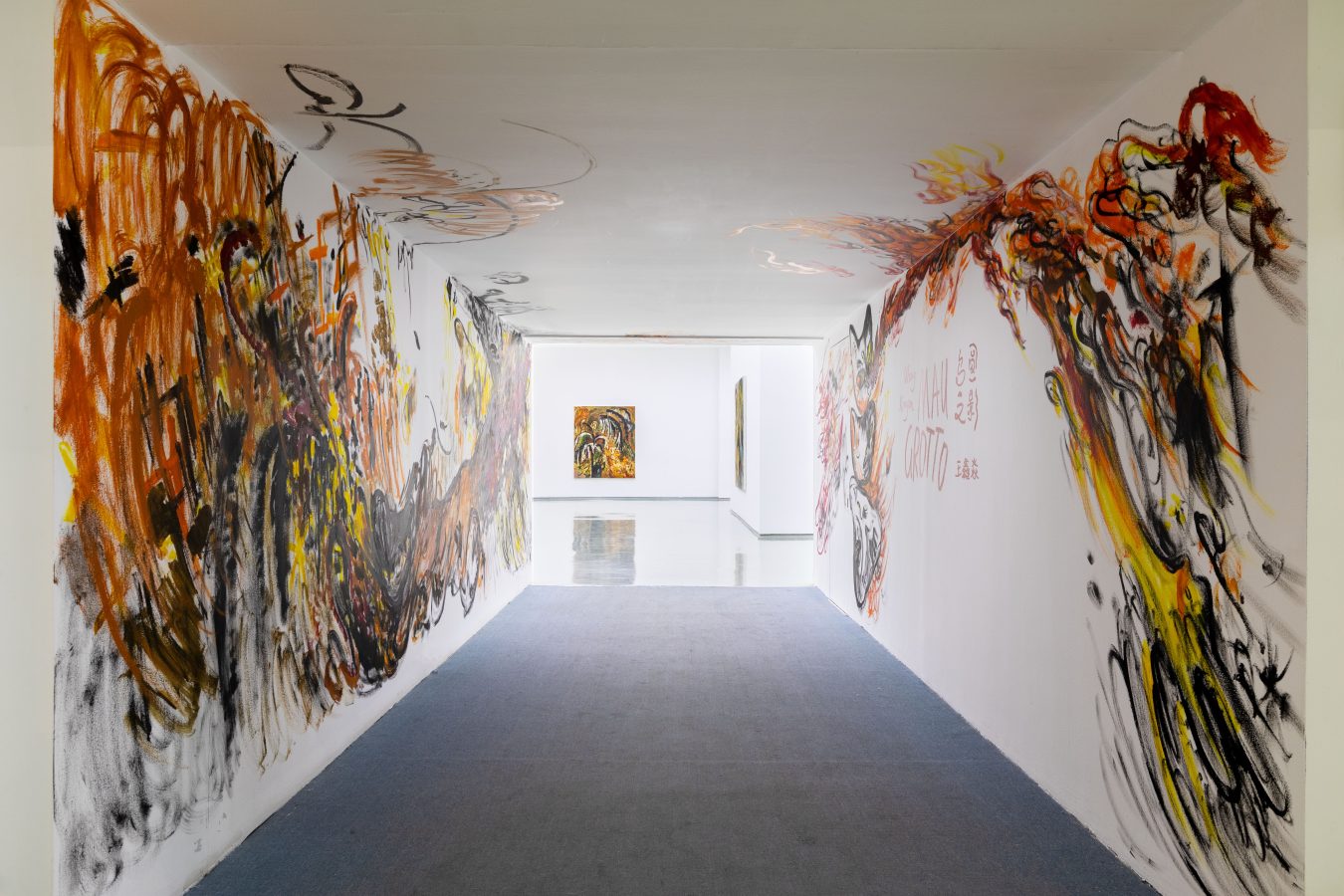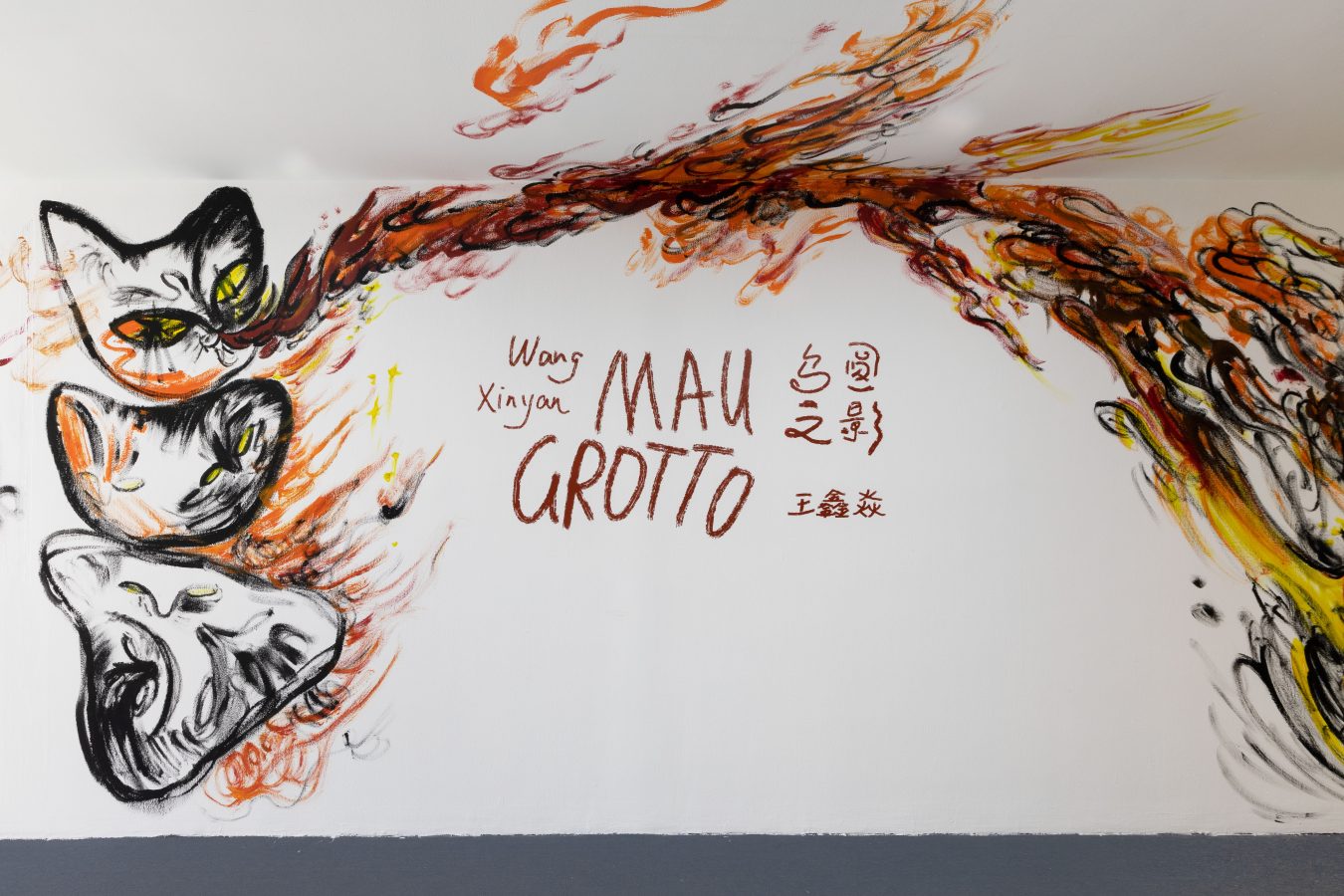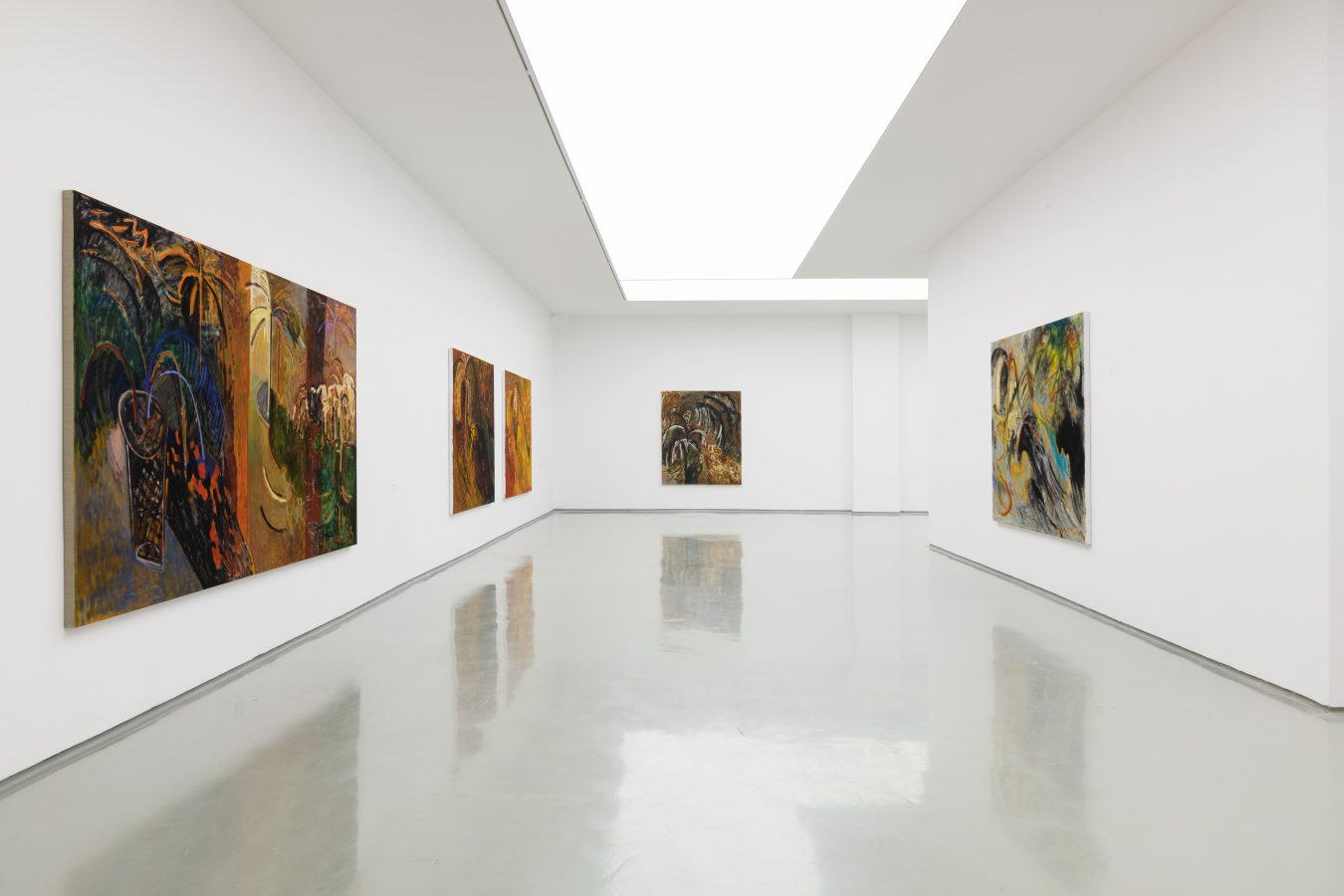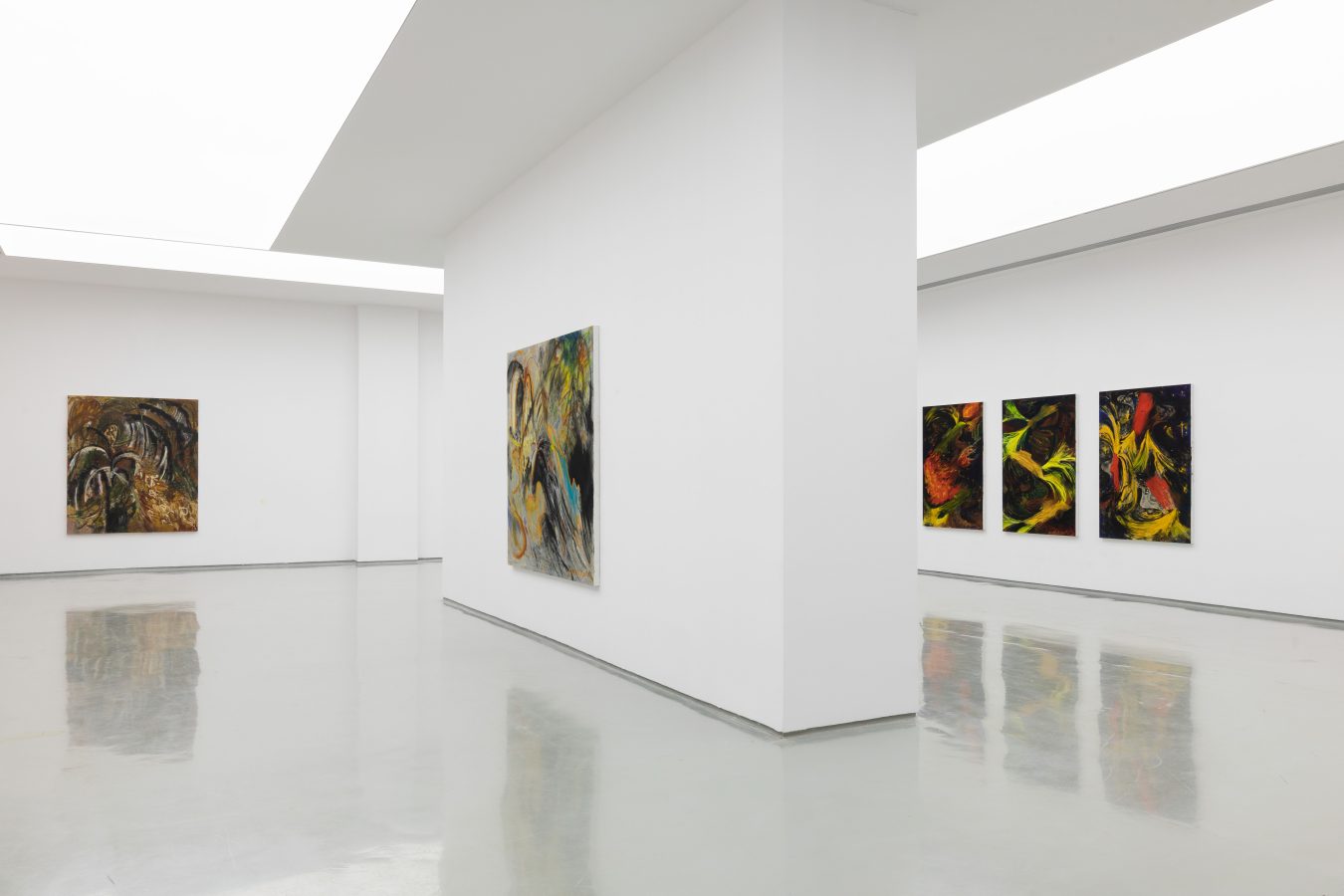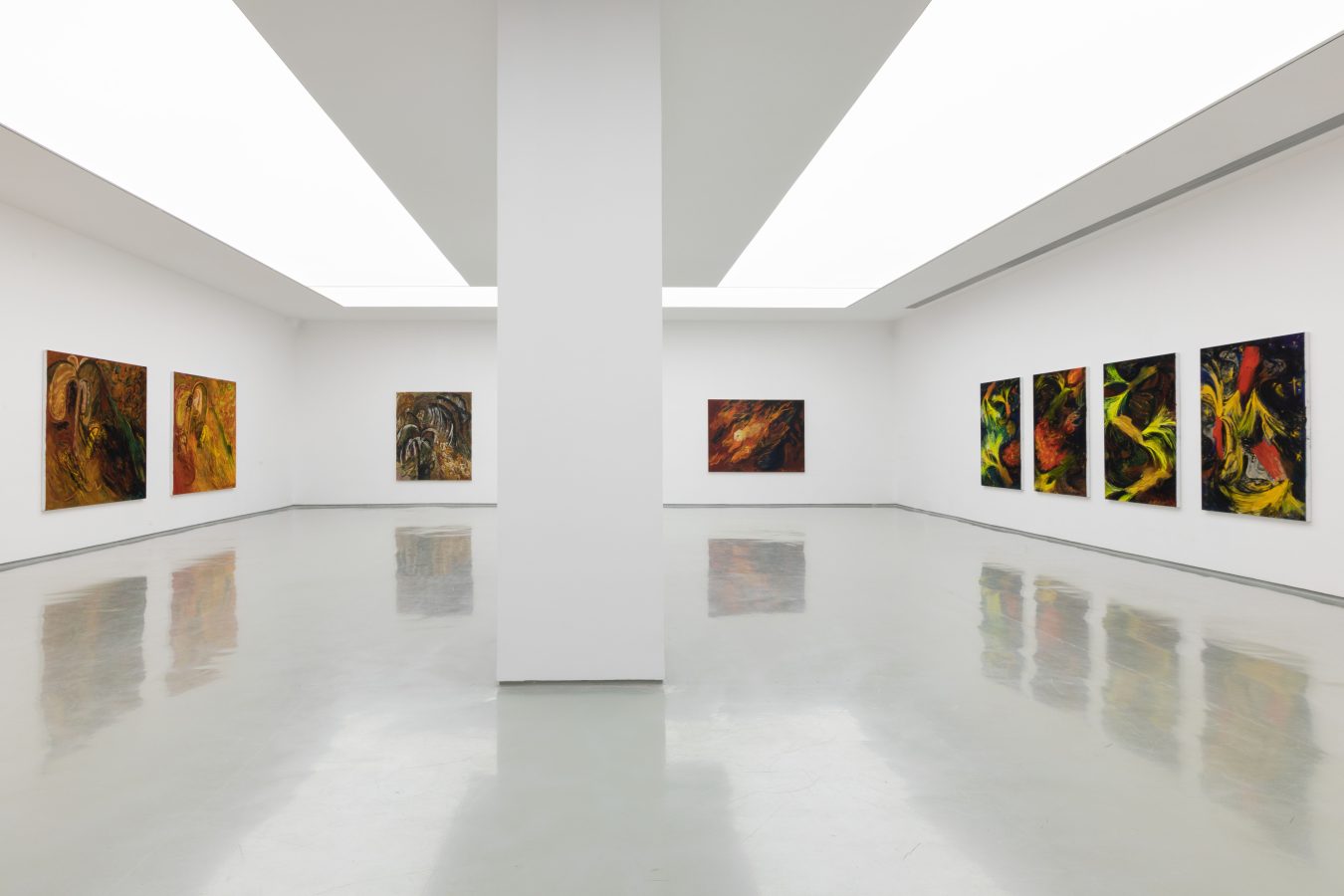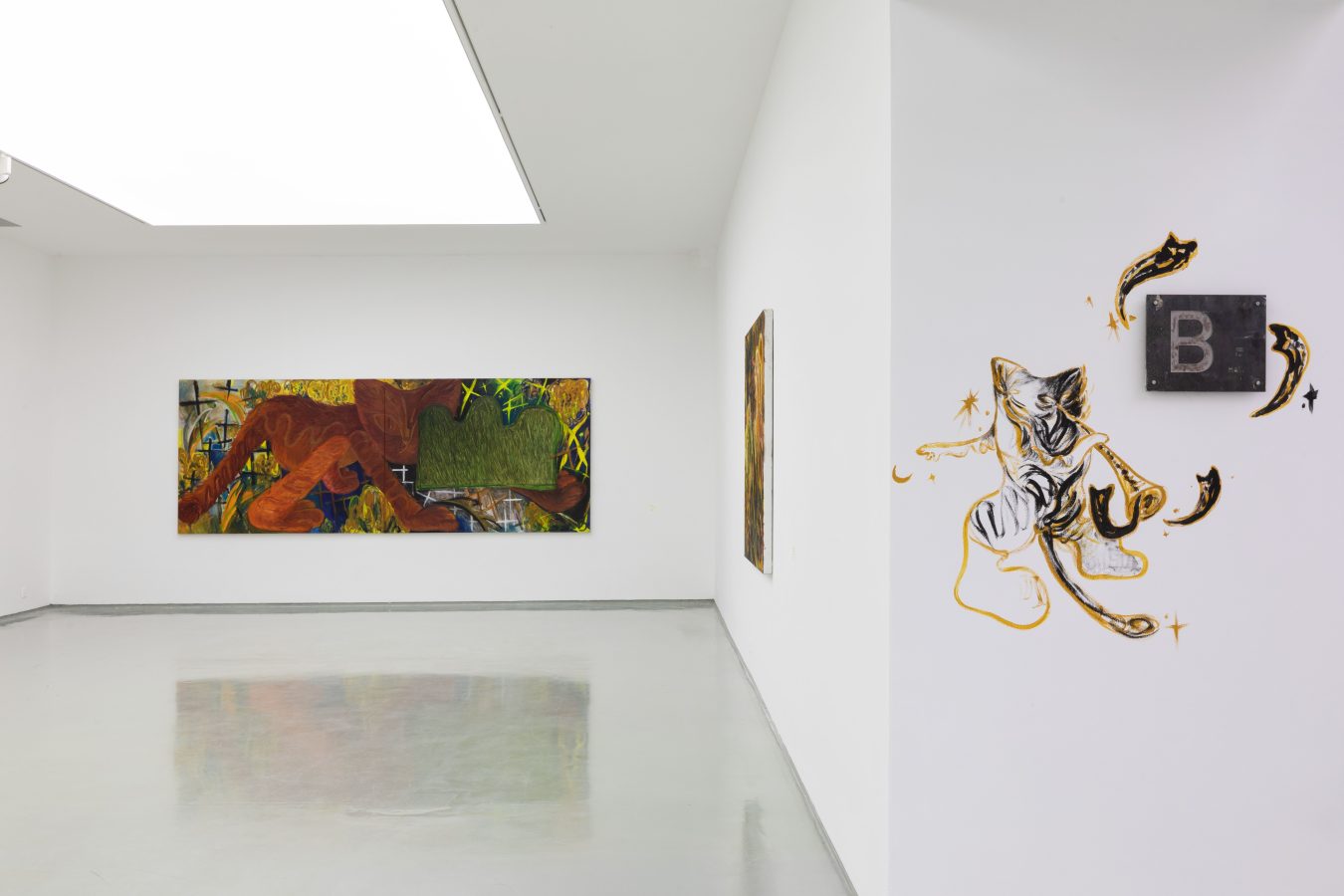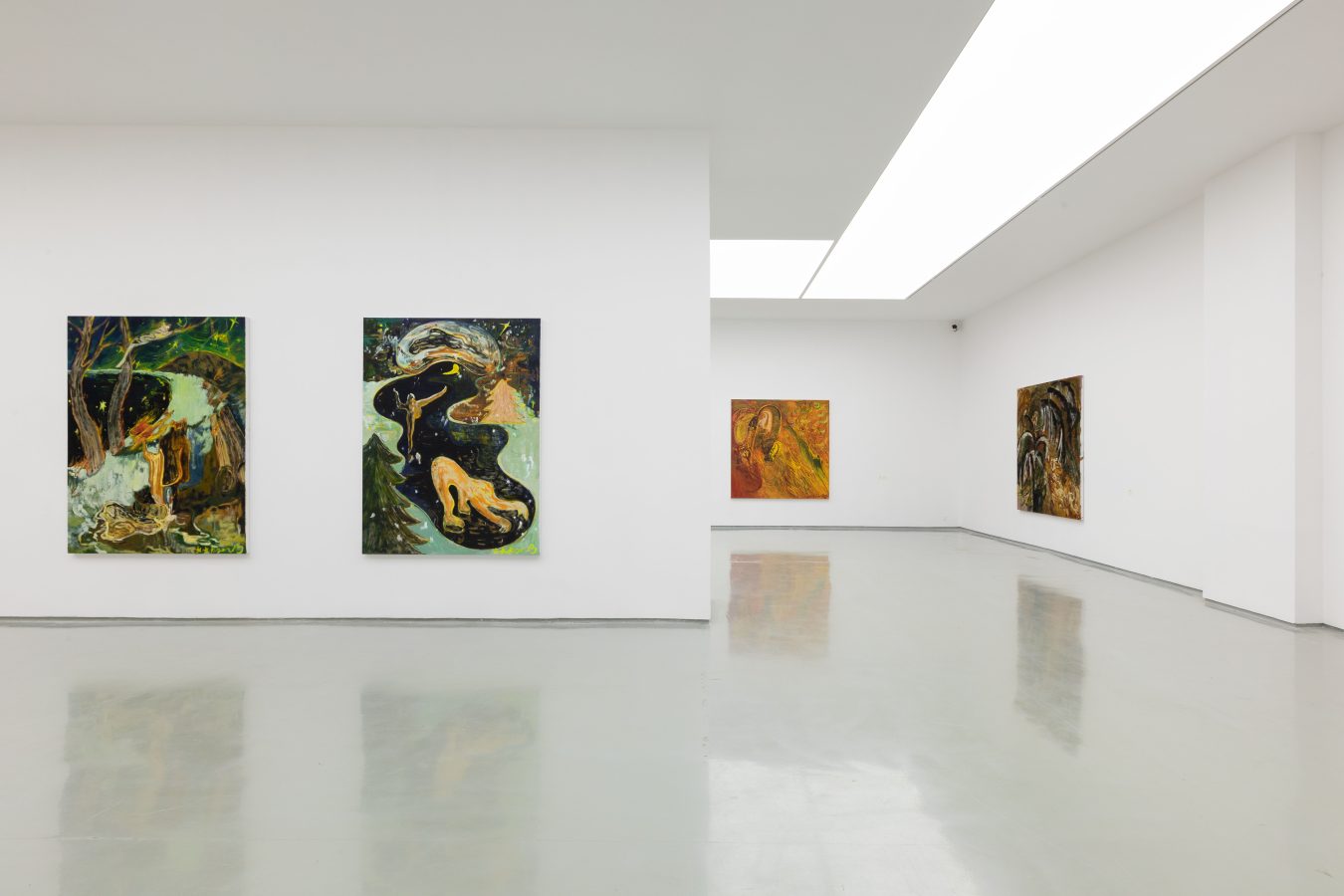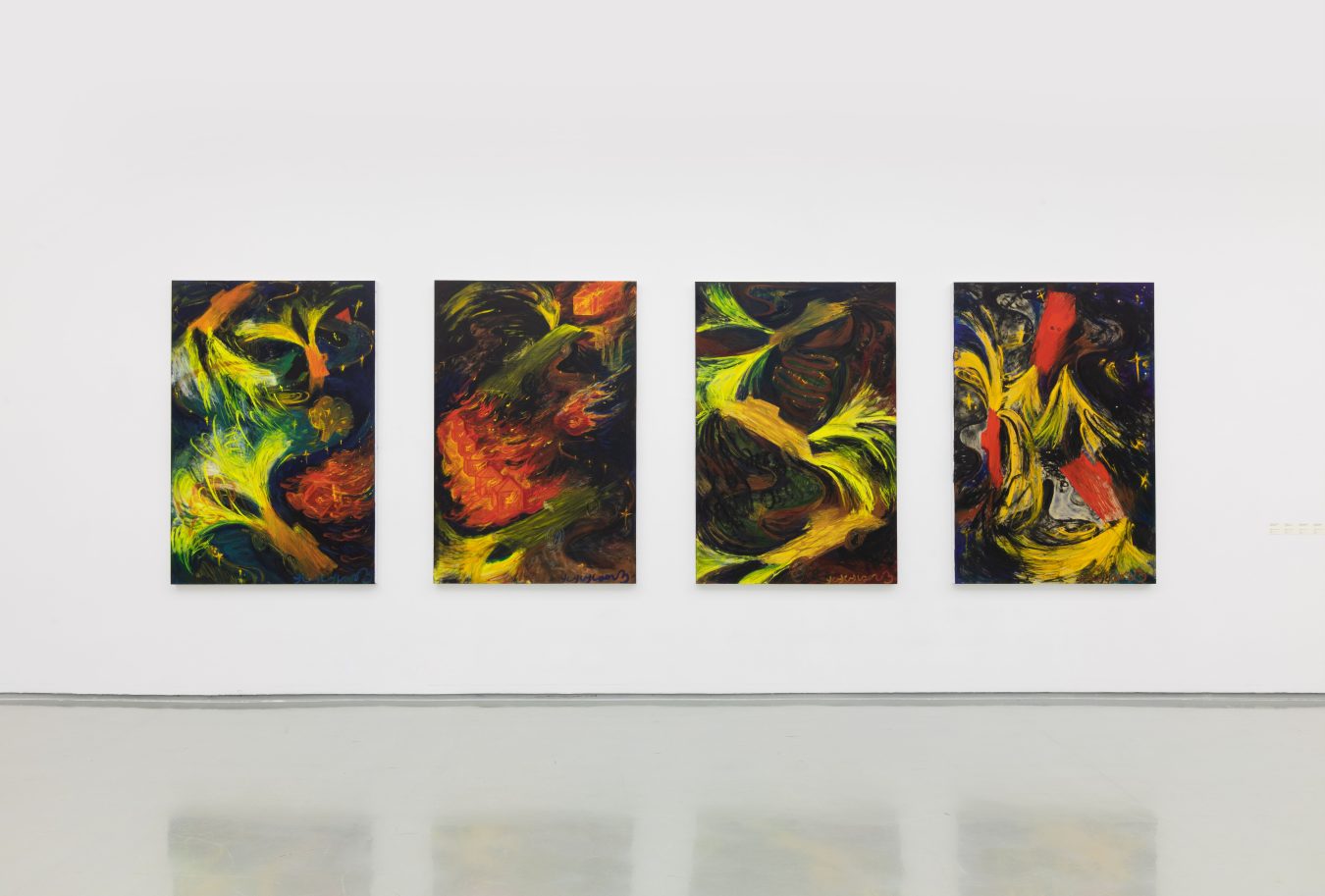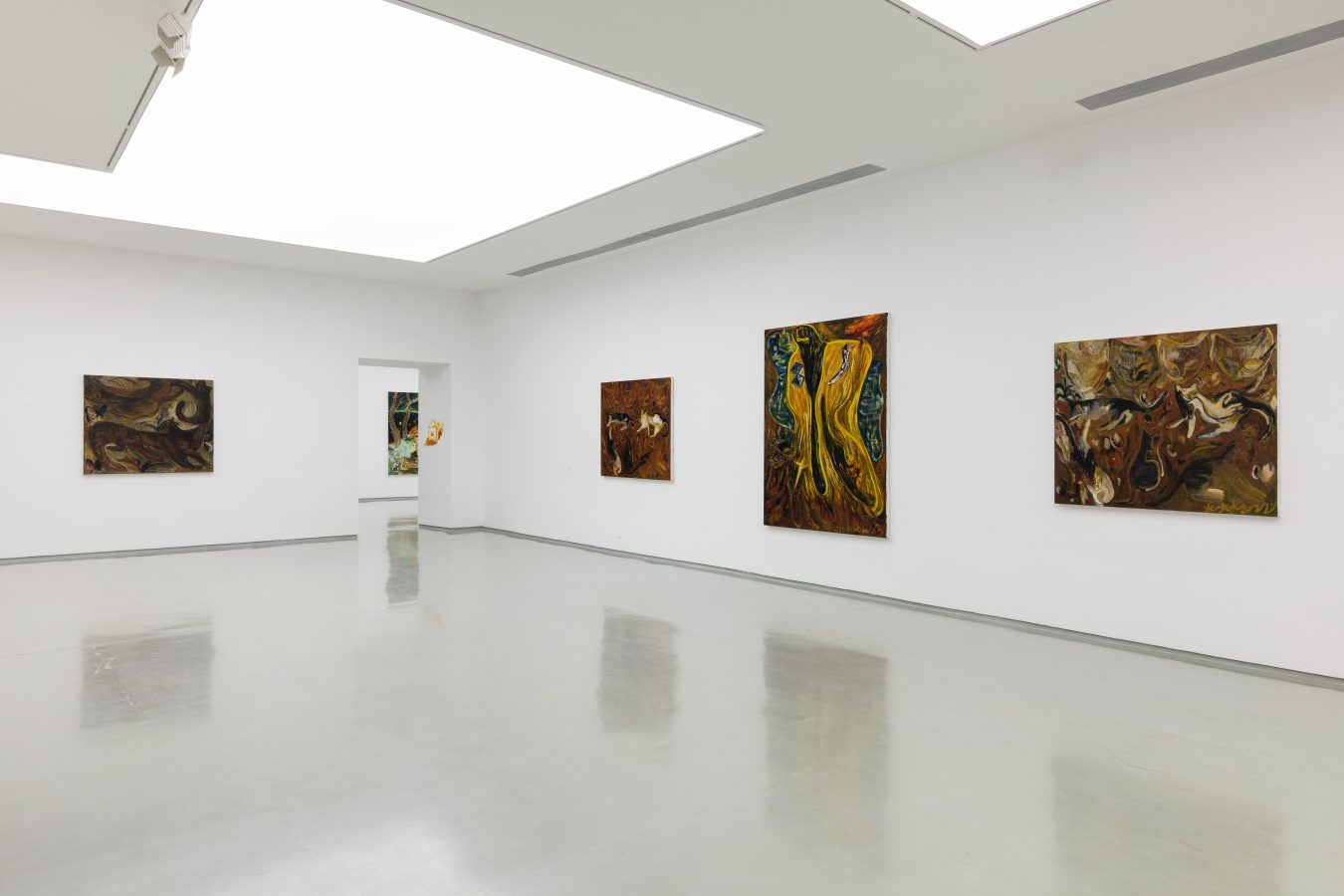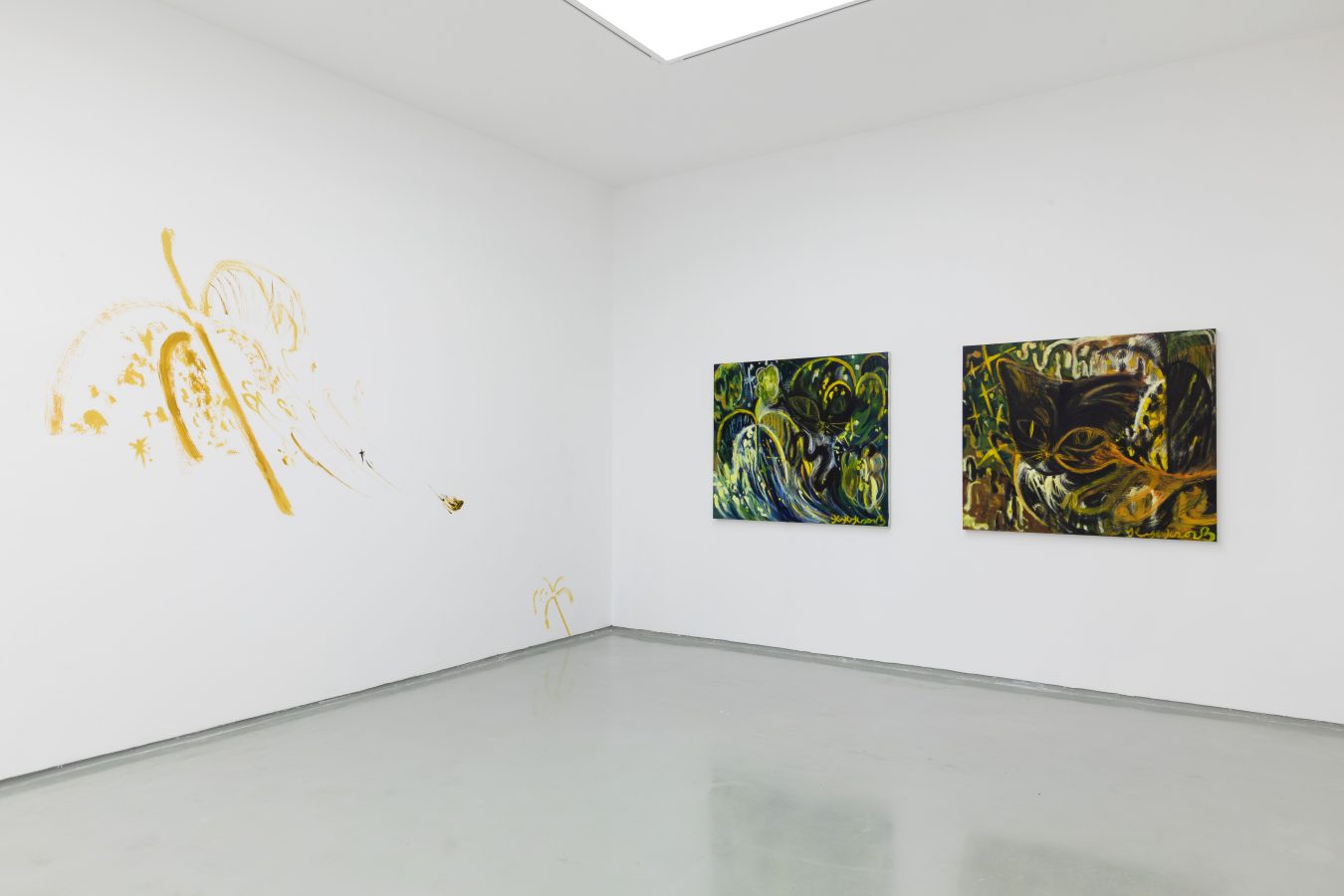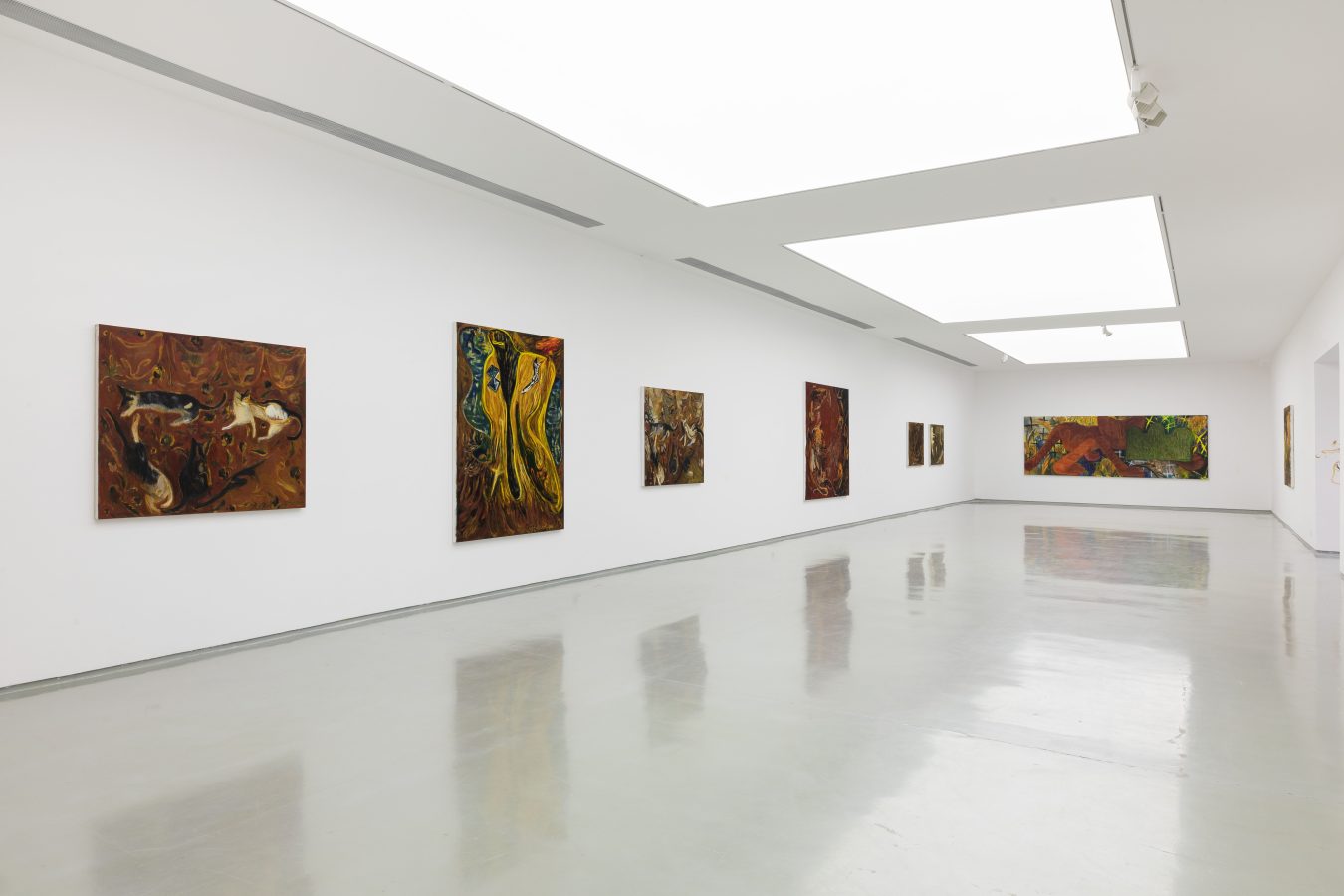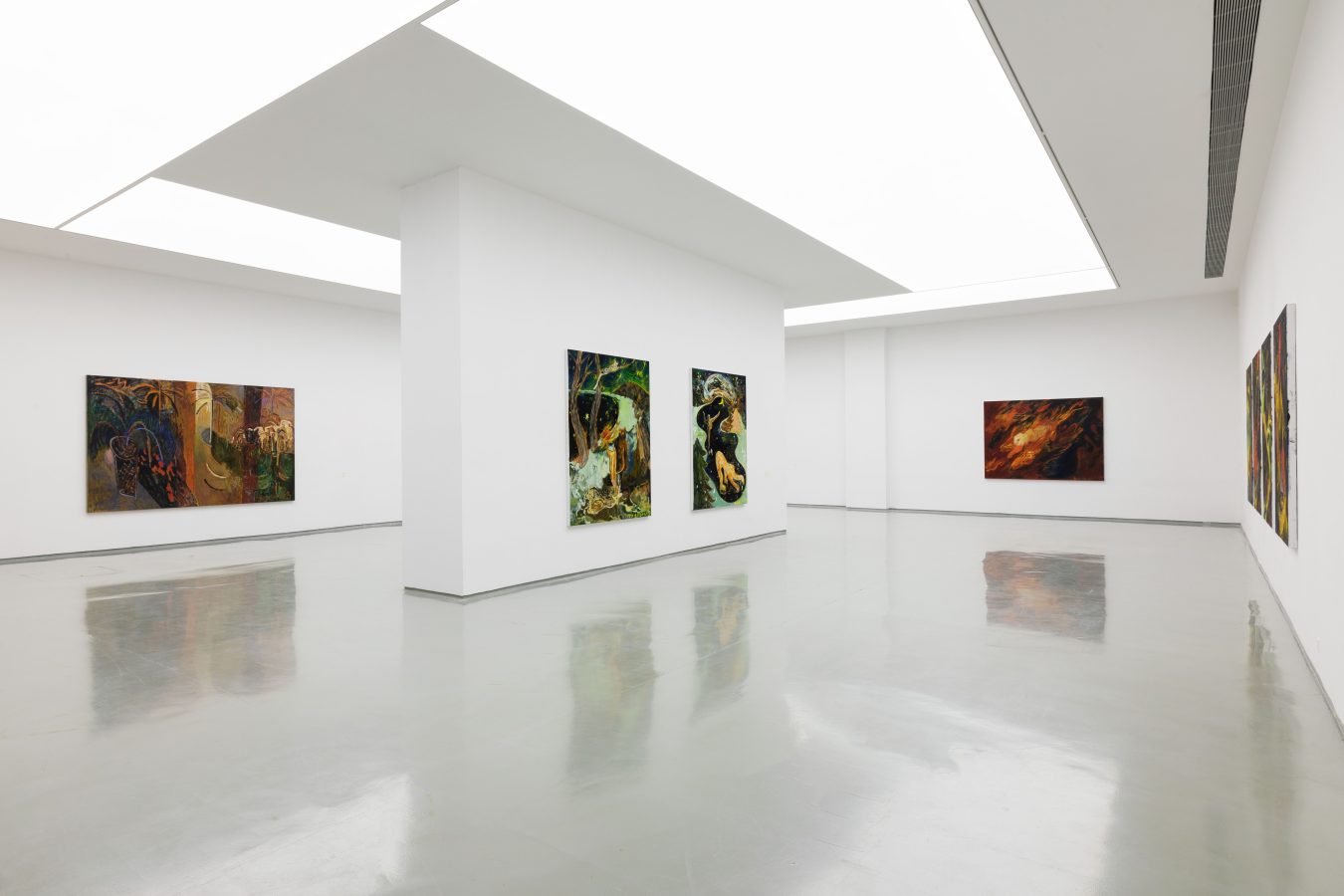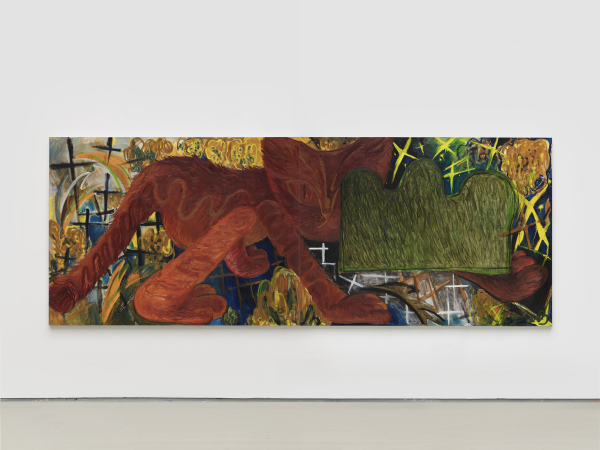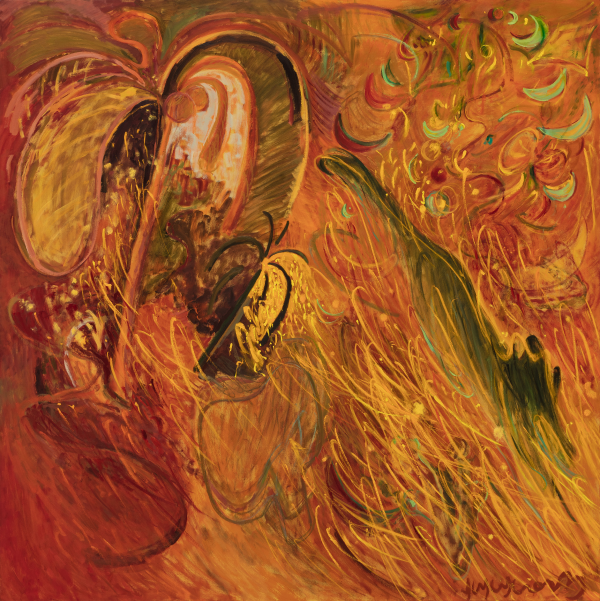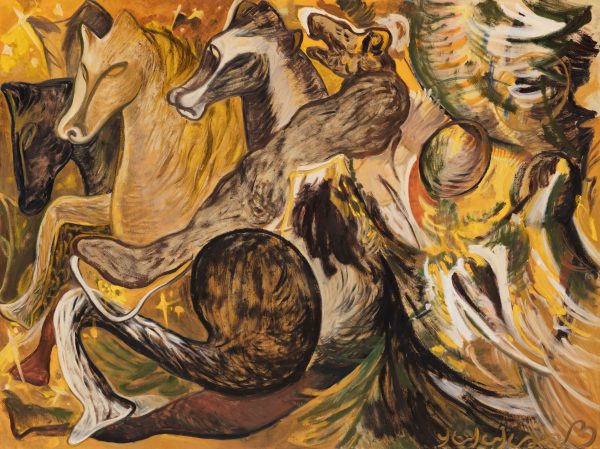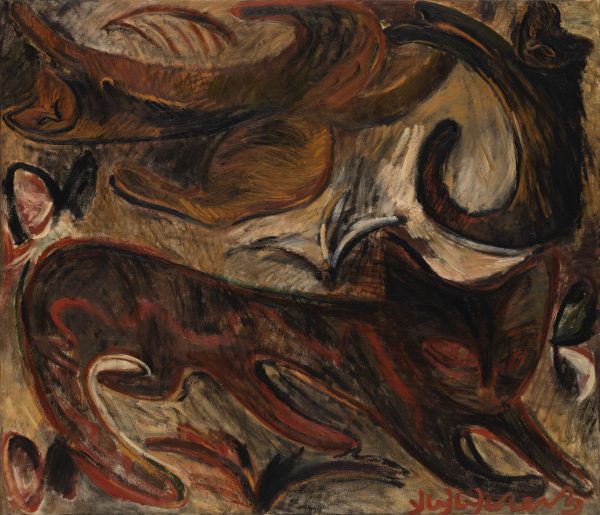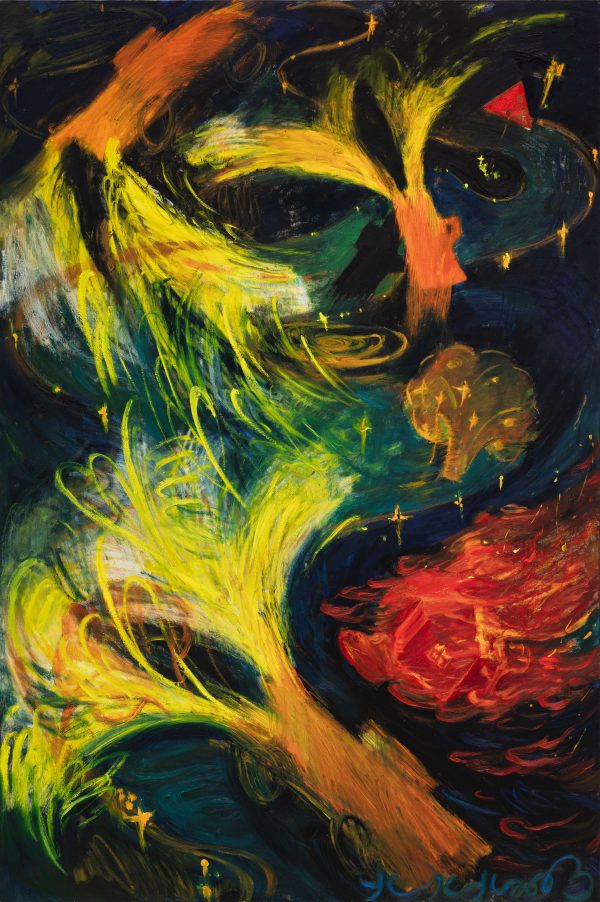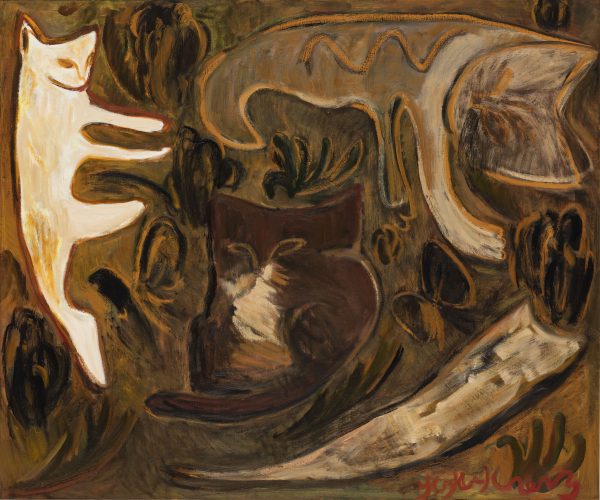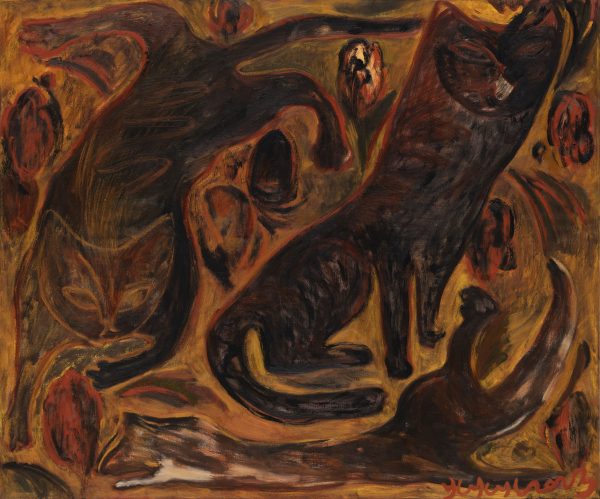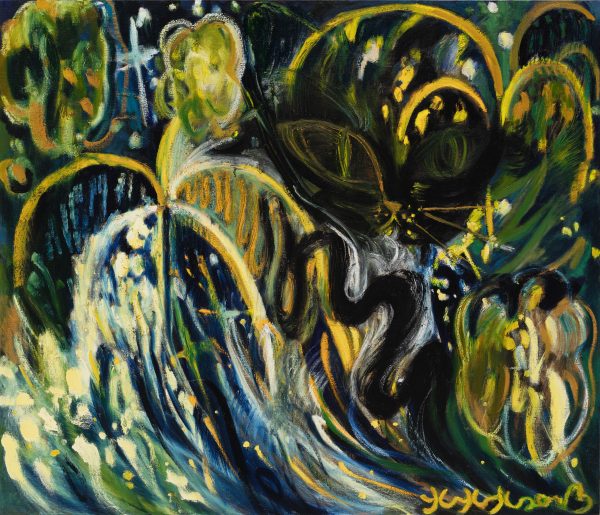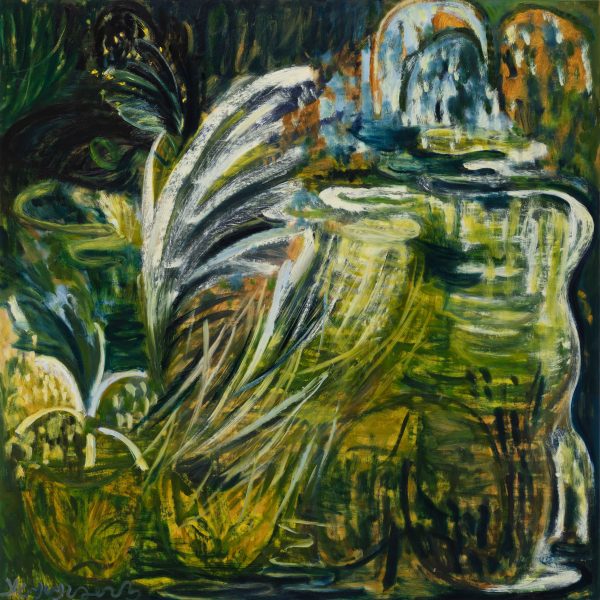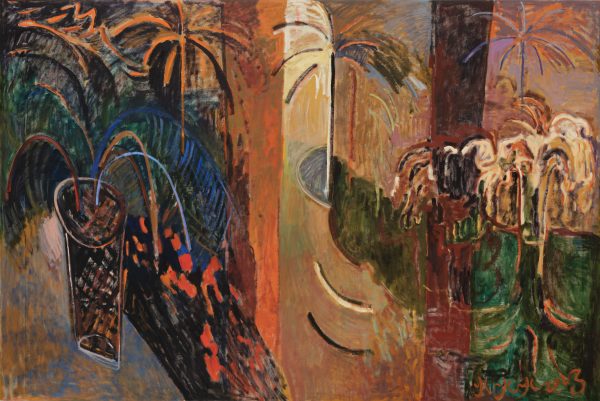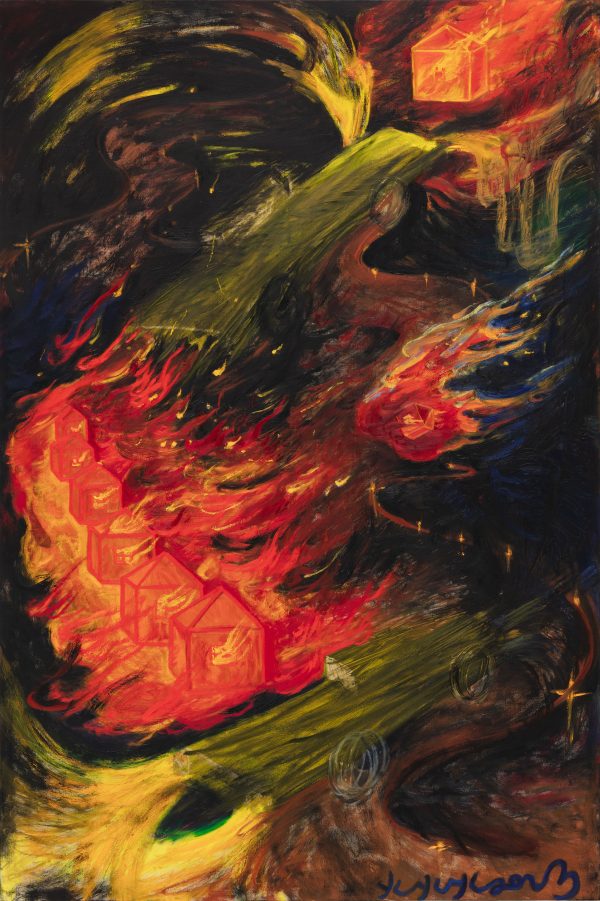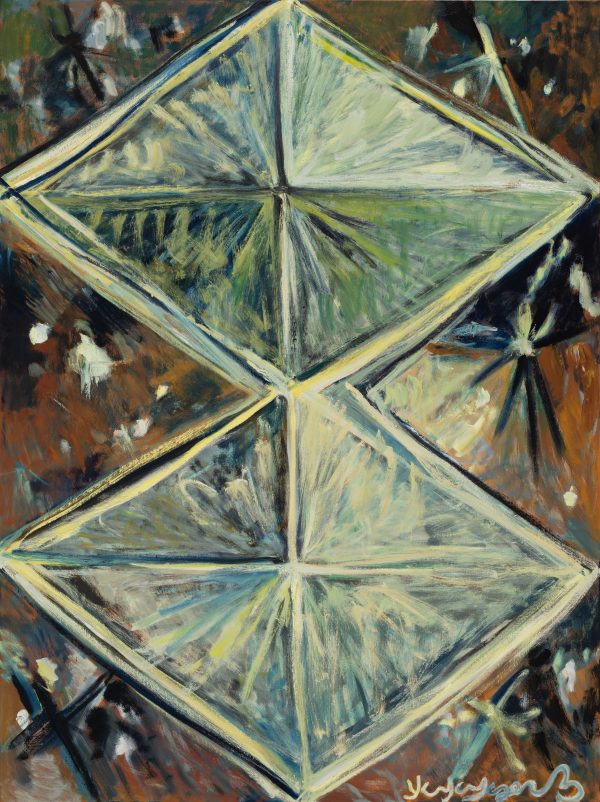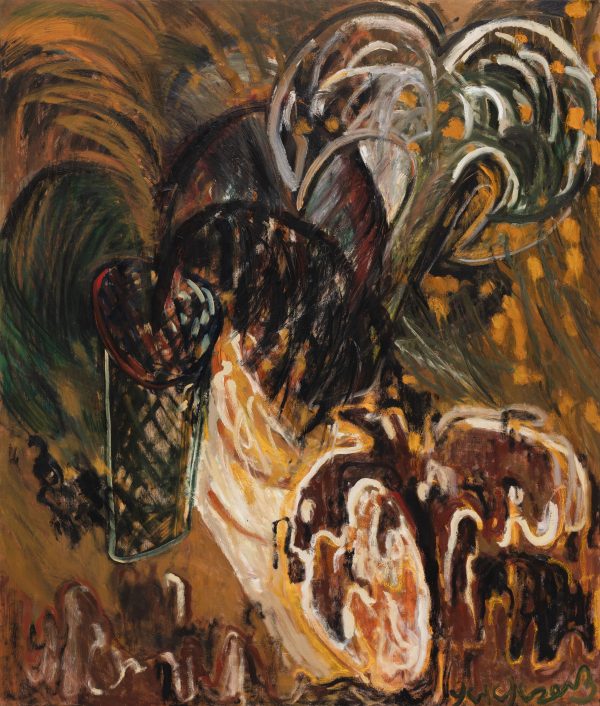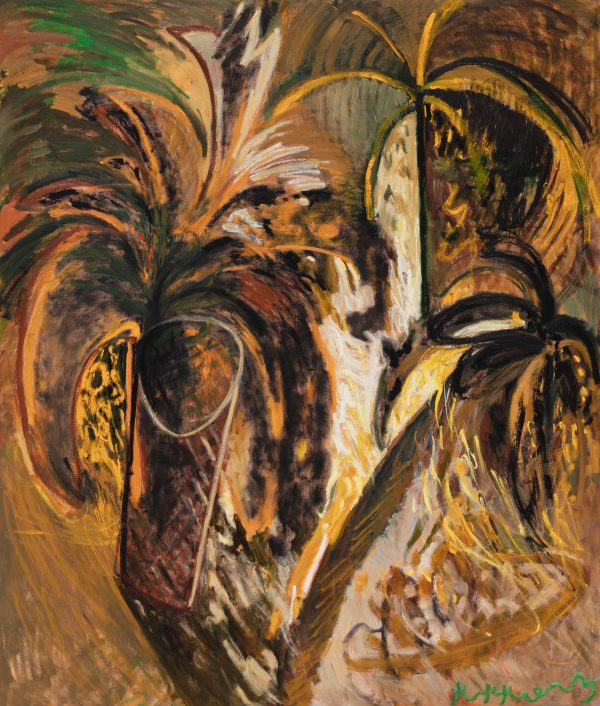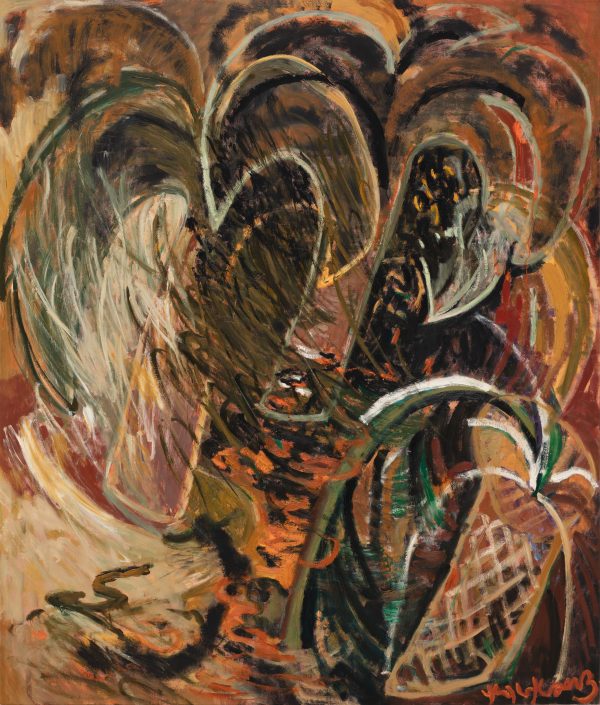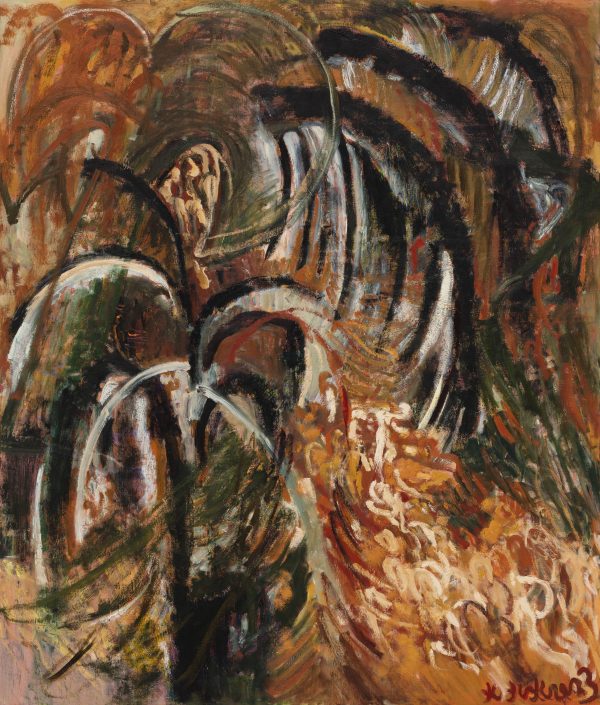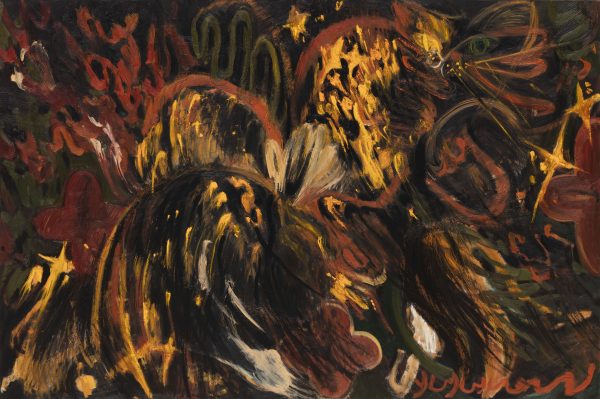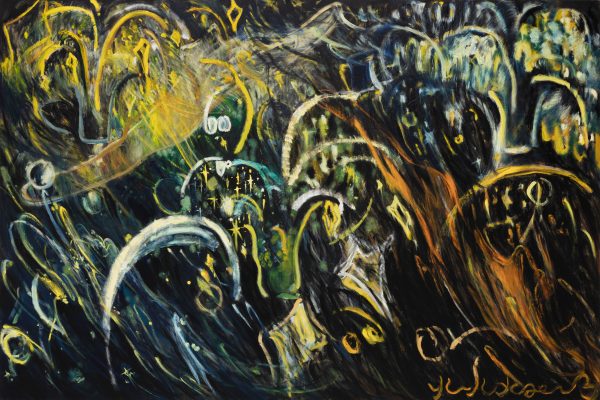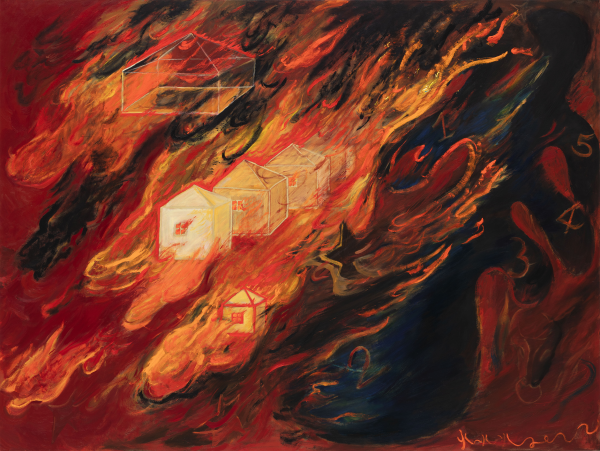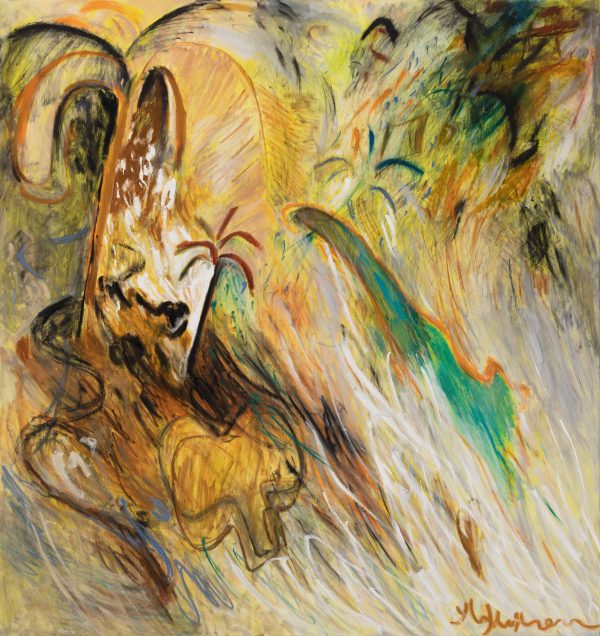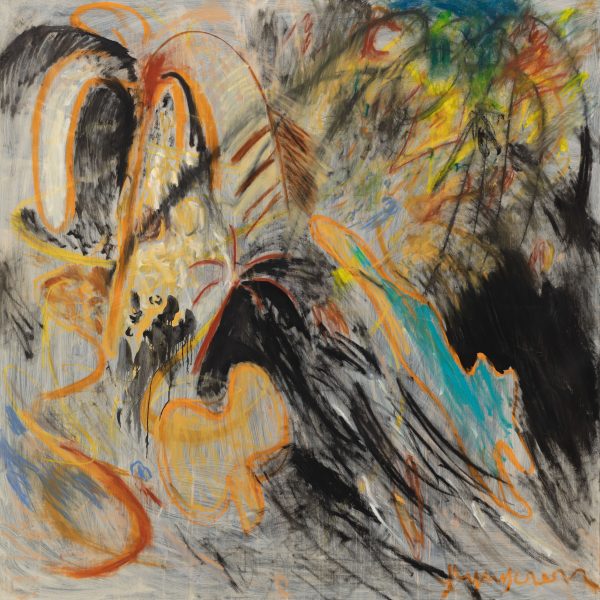Curator : Yang Jian
Artist: Wang Xinyan
Hive Center for Contemporary Art is pleased to announce the opening of Wang Xinyan’s debut solo exhibition, Mau Grotto, featuring more than 40 paintings from the artist’s recent practice, on 25 June at Hive Beijing’s exhibition halls B and C. This show is curated by Yang Jian, director of Hive Becoming, and will be on view until 25 July.
Born in Beijing in 1995, Wang Xinyan graduated from Central Academy of Fine Arts with an undergraduate degree in 2017, and received her MFA from Central Academy of Fine Arts and the School of the Art Institute of Chicago in 2020 and 2022, respectively. She currently lives and works in Beijing. Her interest and focus on prehistoric civilisation is evident in her recent practice, where silhouetted objects, rough brushstrokes and dark brown tones envelop the canvas. Drawing on petroglyphs and the underlying totems, symbols and rituals, Wang discovers a suitable vessel for the visualisation of her subconscious, integrating the fragments of her everyday inspirations to achieve a cathartic and pictorial exploration of her emotions. In particular, the ‘primitive’ or the ‘primitivist’ interest revealed in Wang’s work is not the objective of her practice, but rather a ‘black mirror’ that imposes a criterion of judgement on external perceptions, signifying her rejection of the inherent aesthetic standards and the pursuit of the basic laws of simplicity and value.
The Chinese title of this exhibition, literally translated to ‘the shadow of wuyuan’, is a synthesis of two concepts. The word wuyuan refers to the ancient name for cats, taken from the Sequel of Miscellaneous Morsels from Youyang. A visual symbol and clue that Wang Xinyan often borrows, the cat is both a manifestation of the artist’s interests and a visual representation of her creative philosophy. She takes ‘life’ as the anchor of her practice, and the feline identity establishes a connection between her, her cats and her life. In this way, the portrayal of cats is a focus on life. In addition, the artist’s choice of cats is inextricably linked to her pursuance of pictoriality – she prefers to let the image itself determine the appearance of the painting rather than presuming the subject or content. In other words, cats are no different from everyday objects such as apples and trees, they are just combinations of lines and shapes, and the image of a feline meets the needs of her formal exploration at this stage.
The concept of shadow is derived from Plato’s ‘Allegory of the Cave’, where the cat, the house and the branches of the plants scatter across the canvas in the form of silhouettes, in the same way as the shadows cast by the firelight on the walls, forming the ‘visible world’ in the work. The image of the cat lurking in the dense forest signals an awakening, guiding the artist out of the shackles of illusion and into the world of the perceivable.
As an extension of the works on canvas, the entire exhibition is articulated by the wall drawings. The presence of the wall drawings organically connects all the works in the gallery, returning them to a more original, unified state, while simultaneously constructing a field of symbols that, through the shadow of systematic reduction, evoke the passion for life as the underlying spiritual precipitation of the collective experience.
